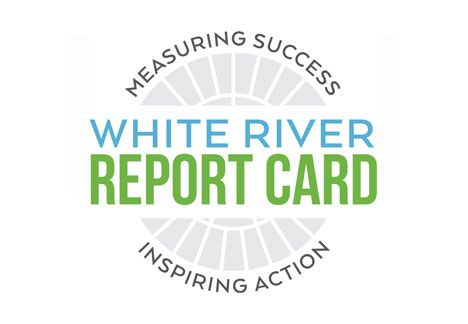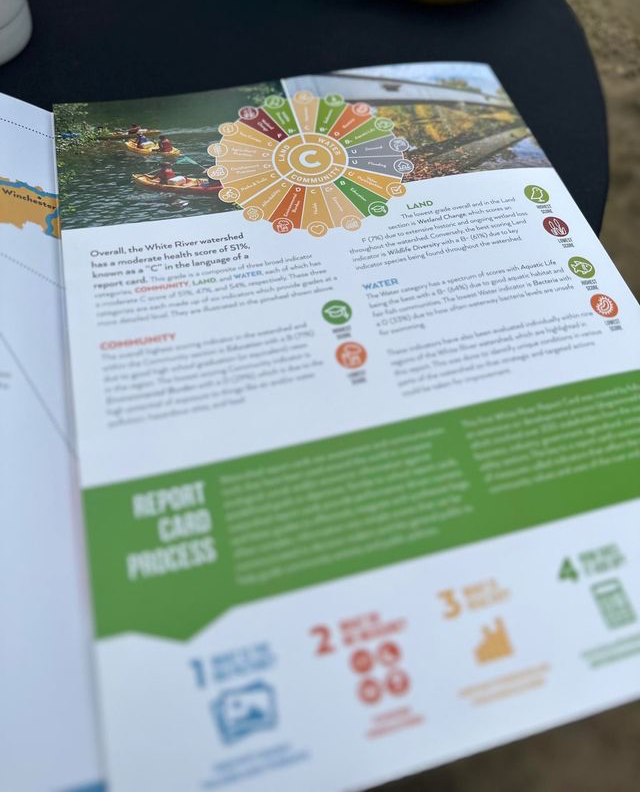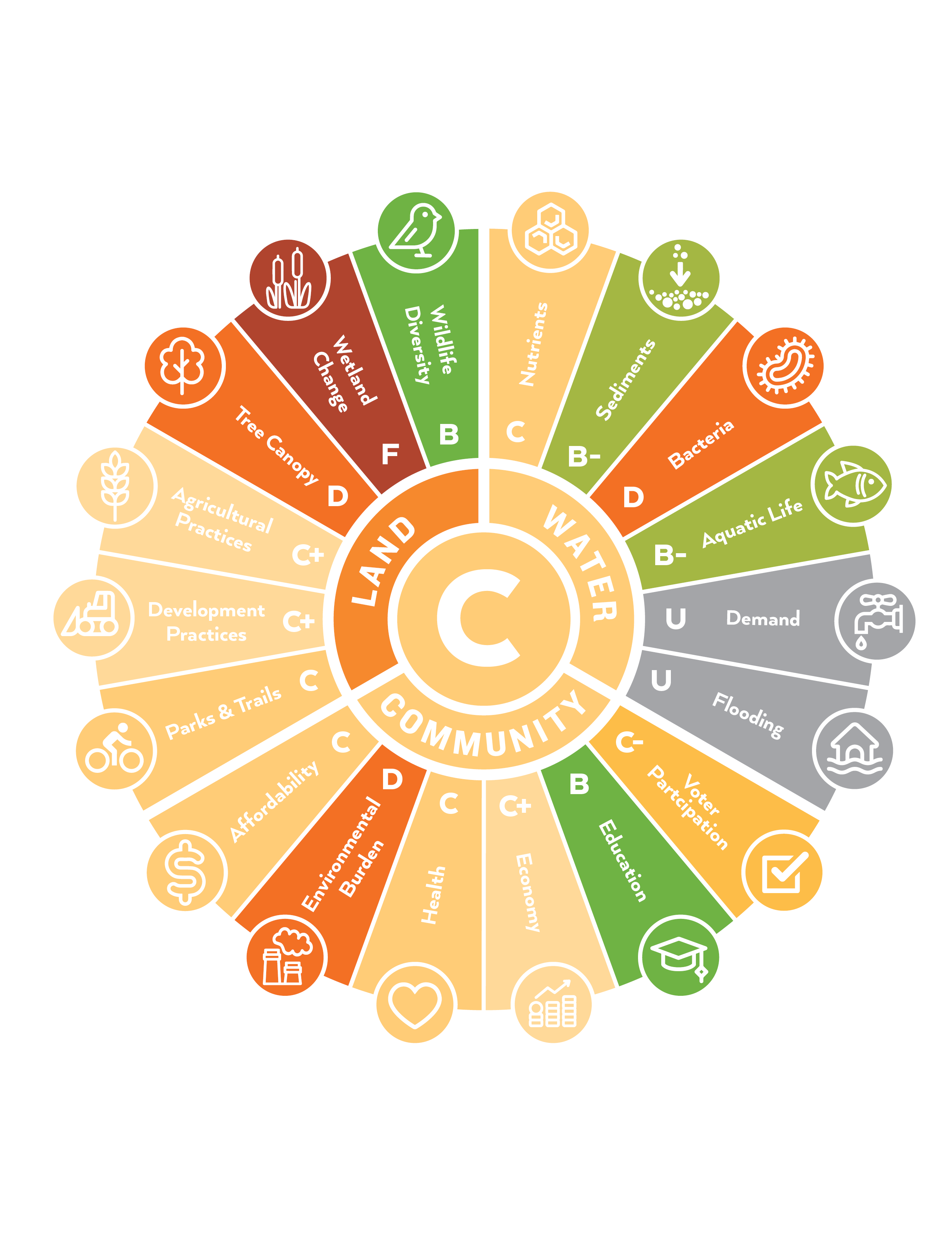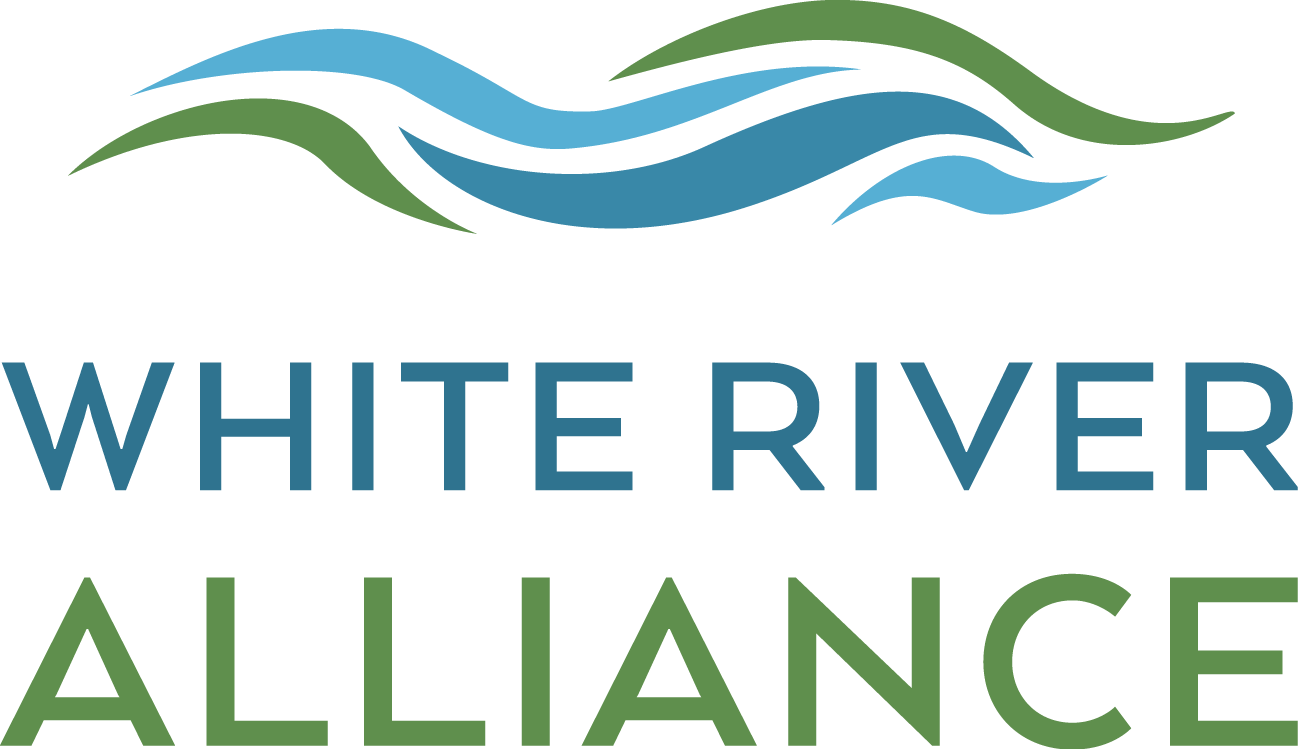

Programs
White River Report Card
The White River Report Card is an assessment and communication tool to measure community progress, align partners and activities, and inspire change that improves our river and its watershed while preserving the community and economy.
The White River Report Card is an assessment and communication tool to measure community progress, align partners and activities, and inspire change that improves our river and its watershed while preserving the community and economy.
The White River Report Card
Watershed report cards similar to school report cards, but instead evaluate complex data about ecological, social, and/or economic information against predefined goals or objectives. They use a grading system to synthesize complicated information into simple scores that can help guide community activity and public policy.
Report Card Development
The first White River Report Card was created by following an extensive co-development process which involved over 500 stakeholders from diverse sectors and the community. The key to a report card’s success is the use of measures called indicators that reflect the many different community values and uses of the river and its watershed.
Learn more about the Report Card by clicking the button below.

White River Grades
Overall, the White River watershed has a moderate health score of 51%, which would be considered a “C”. This grade is a composite of three broad indicator categories: COMMUNITY, LAND, and WATER, which are each made up of six indicators that provide grades at a more detailed level. They are illustrated in the pinwheel shown below.

Community
The overall Community score is 51%, a C. The highest scoring indicator is Education with a B (71%) due to good high school graduation (or equivalent) rates in the region. The lowest scoring Community indicator is Environmental Burden with a D (29%), which is due to the high potential of exposure to contaminants like air and/or water pollution, hazardous sites, and lead.
Land
The overall Land score is 41%, a C. The highest scoring indicator is Wildlife Diversity with a B- (61%) due to key indicator species being found throughout the watershed. The lowest grade is Wetland Change, which scores an F (13%) due to extensive historic and ongoing wetland loss throughout the watershed.
Water
The overall Water score is 54%, a C. The highest scoring indicator is Aquatic Life with a B- (64%) due to good aquatic habitat and fish communities. The lowest-scoring indicator is Bacteria with a D (33%) due to how often waterway bacteria levels are unsafe for swimming.
These indicators have also been evaluated individually within nine regions of the White River watershed. This was done to identify unique conditions in various parts of the watershed so that strategic and targeted actions could be taken for improvement.
Explore White River Report Card Grades by clicking the button below.
Next Steps
Raise The Grade!
The creation of the White River Report Card is just the beginning. It will be used to broadly communicate community and ecosystem conditions , increase public awareness, align partners, and inform decision-makers to promote collective work to improve the health of the watershed. Additionally, the multidisciplinary stakeholders that created the report card will continue to work together to develop policy language, model local ordinances, and other strategies to improve future report card scores.
Learn more about improvement strategies by clicking on the button below.
